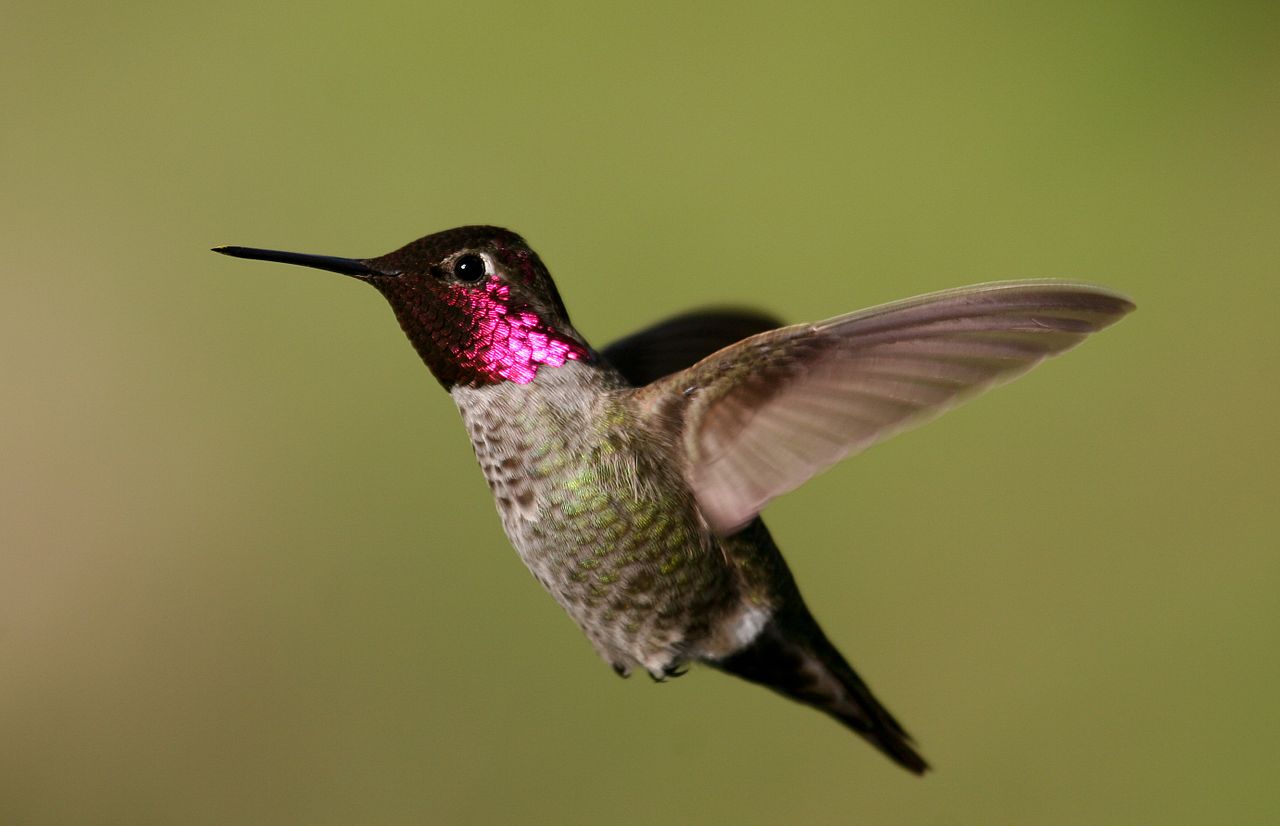Hummingbirds Info
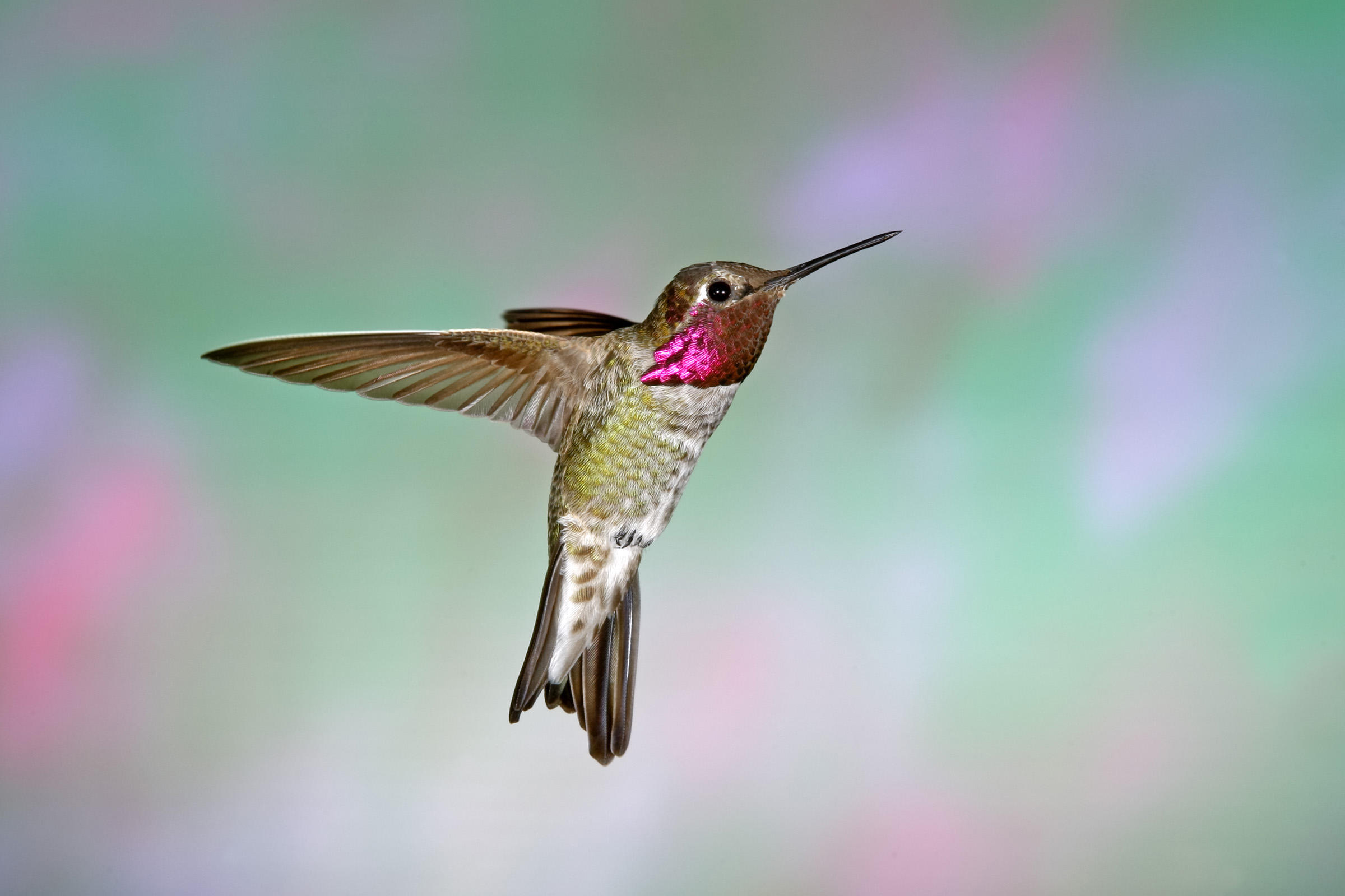
Learning about hummingbirds will make it easier to attract these flying jewels to your hummingbird feeders. Have you ever wondered... How fast do hummingbirds' wings flap? Why do they seem to change colors in flight? What do hummingbirds eat? Where do they go in the winter? Here are a few facts about the hummingbird that every backyard bird watcher should know.
The hummingbird family, Trochilidae, can only be found in the Western Hemisphere. There are 328 known species of hummingbirds. Tyrant flycatchers are the only family of wild birds to have more known species. There are only about 20 species of hummingbirds that visit North America and Mexico. The 300 plus additional species are considerably more diverse in size, color patterns and lifestyle.
What do hummingbirds eat? Most of us think of flower nectar when answering this question. Another one of the interesting facts about the hummingbird is that they also eat small flying insects. They catch them while flying in and out of a swarm or by flying out from a perch.
How big are hummingbird eggs? Hummingbird eggs are about the size of a navy bean. The clutch normally contains two eggs. There is usually a two-day interval between the laying of the first egg and the second one. Most hummingbirds that breed in North America migrate to more tropical climates for the winter. As sunlight and the food source of nectars and insects decrease and the temperatures start to fall, the hummers will begin their journey south to Central America. Many hummingbirds that migrate to North America travel amazing distances. Part of the trip includes a non-stop, 500-mile flight over the Gulf of Mexico.
Do hummingbirds change colors? Iridescent colors such as those of hummingbird gorgets (the gorget is the brilliantly colored area on the throat of a male hummingbird), are illusions caused by refraction of light. Changes in the angles from which light strikes the gorget give the effect of different colors. When sunlight is not striking the gorget at the right angle the feathers will appear all black.
Do hummingbirds sing? Hummingbirds are not known for having a pleasing melody. Most of them manage only a few strident, scratchy notes. Hummingbirds are better known for their distinctive "zinging" noises made with their wings.
Here are some fast facts about hummingbirds
- Most hummingbirds flap their wings about 50 or so times a second, faster than any other bird.
- A hummingbird's heart beats up to 1,260 times per minute.
- Hummingbirds fly an average 25-30 mph, but can reach speeds of 60 mph when diving.
- Hummingbirds may visit as many as 1,000 flowers per day in their non-stop search for food.
- Although the hummingbird is the smallest species of bird, its brain accounts for 4.2% of its total body weight, making it, proportionately, the largest brain in the bird kingdom.
- Hummingbirds can live 10 or more years in the wild.
Habitat
Anna’s Hummingbirds are common in urban and suburban settings as well as wilder places such as chaparral, coastal scrub, oak savannahs, and open woodland. They are notably common around eucalyptus trees, even though eucalyptus was only introduced to the West Coast in the mid-nineteenth century.
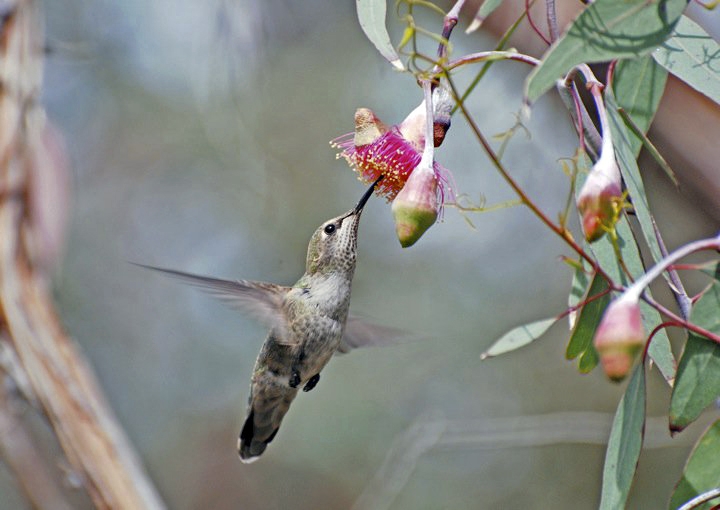
Food
Anna’s Hummingbirds eat nectar from many flowering plants, including currant, gooseberry, manzanita, and many introduced species such as eucalyptus. They also eat a wide array of insects from understory leaves, crevices, streambanks, or caught in spider webs, plucked from the air, or taken from flowers. Primarily they target smaller insects, like midges, whiteflies, bees and leaf hoppers (one female was found with 32 leafhoppers in her stomach at once). They also help themselves to tree sap (and insects caught in it) leaking out from holes made by sapsuckers.
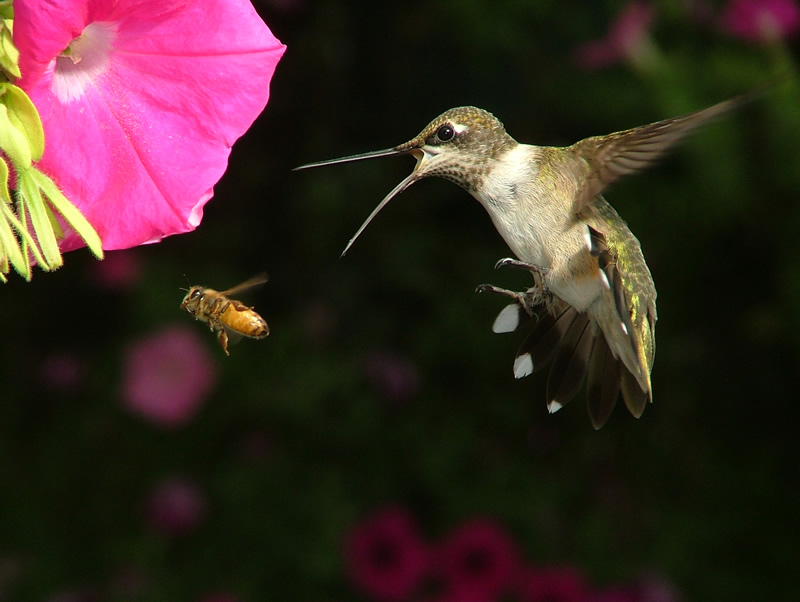
Nesting
NEST PLACEMENT
Females choose the nest site, usually a horizontal branch of trees or shrubs 6-20 feet off the ground (occasionally higher) near a source of nectar. They often build nests in oak, sycamore, or eucalyptus trees, but they may use vines, shrubs or even poison oak. They use conifers less frequently.
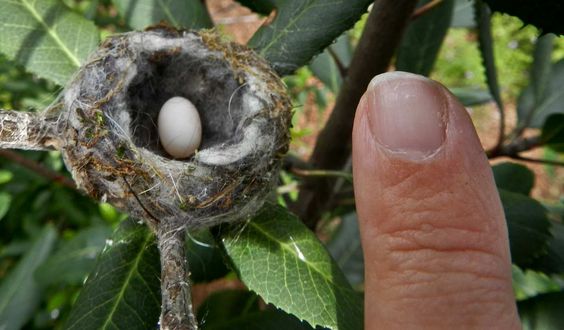
NEST DESCRIPTION
The female builds the nest out of plant down and spider webs, sitting in the nest and building the cup rim up around her. Nests take around a week to build and are 1 inch tall by 1.5 inches in diameter. They may be built of cattail, willow, leaves, thistle, or small feathers and bound together by spider webs or insect cocoons. They may decorate the outside with lichens, mosses, or even paint chips. They sometimes steal these from other active nests.
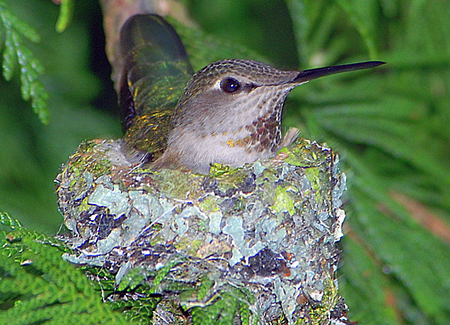
NESTING FACTS
- Clutch Size: 2 eggs
- Number of Broods: 2-3 broods
- Egg Length: 0.5-0.6 in (1.2-1.4 cm)
- Egg Width: 0.3-0.3 in (0.8-0.9 cm)
- Incubation Period: 16 days
- Nestling Period: 20 days
- Egg Description: White
- Condition at Hatching: Eyes closed, very little down, virtually helpless.

Behavior
Anna’s Hummingbirds hover deftly and zip from flower to flower. They are at their most splendid when performing their wild courtship dives. A male flies as high as 130 feet in the air and then plummets toward the ground (and the watching female), where he lets loose a unique short high-pitched noise made by air whipping through his tail feathers. As courtship progresses, the male chases a receptive female, who leads him toward her nest site, and perches again. The male then performs a “shuttle display,” where he swings back and forth about a foot above the female, keeping his body horizontal and his head down toward the female, often singing an intense song. When males are not feeding or performing, they often sit fairly high in a bush or small tree, noisily chattering. Males and females do not form pairs, and both sexes likely mate with more than one individual per season. Only the females care for the young.

Conservation
Anna's Hummingbirds populations increased by over 2% per year between 1966 and 2014, according to the North American Breeding Bird Survey. Partners in Flight estimates the global breeding population at 5 million, with 96% in the United States, 13% spending part of the year in Canada and 15% in Mexico. They rate an 8 out of 20 on the Continental Concern Score, and are not on the 2014 State of the Birds Watch List. The Anna’s Hummingbird is the most common hummingbird on the West Coast, and it has thrived alongside human habitation. Its range has increased dramatically since the 1930s, when it was found only in California and Baja California. Thanks to widespread backyard feeders and introduced trees such as eucalyptus, it now occurs in healthy numbers all the way to Vancouver, Canada. Even so, Anna’s Hummingbirds can fall prey to outdoor cats in gardens where flowers grow close to the ground.
Backyard Tips
Anna’s Hummingbirds are welcome backyard birds and are easy to attract. Set out a hummingbird feeder, then mix your own hummingbird food using one part sugar to four parts water. Don't use honey or food coloring. Anna’s don’t migrate much, so don’t be surprised if the bird visits your feeder all year long. Read more about feeding hummingbirds here, and find out more about food and feeders by using the Project FeederWatch Common Feeder Birds bird list. .

Credits
Clark, Christopher J. and Stephen M. Russell. 2012. Anna's Hummingbird (Calypte anna), version 2.0. In The Birds of North America (P. G. Rodewald, editor). Cornell Lab of Ornithology, Ithaca, New York, USA.
Lutmerding, J. A. and A. S. Love. Longevity records of North American birds. Version 2015.2. Patuxent Wildlife Research Center, Bird Banding Laboratory 2015.
North American Bird Conservation Initiative. 2014. The State of the Birds 2014 Report. US Department of Interior, Washington, DC, USA.
Partners in Flight. 2017. Avian Conservation Assessment Database. 2017.
Sauer, J. R., J. E. Hines, J. E. Fallon, K. L. Pardieck, Jr. Ziolkowski, D. J. and W. A. Link. The North American Breeding Bird Survey, results and analysis 1966-2013 (Version 1.30.15). USGS Patuxtent Wildlife Research Center 2014b. Available from http://www.mbr-pwrc.usgs.gov/bbs/.
Sibley, David Allen. 2014. The Sibley guide to birds, second edition. Alfred A Knopf, New York.

